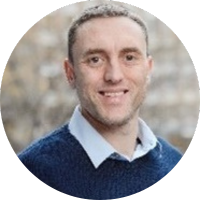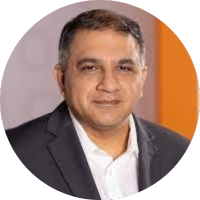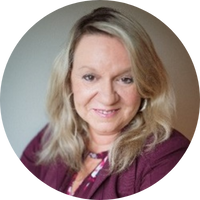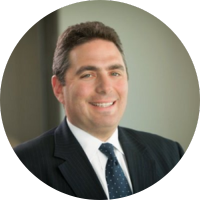22nd Orphan Drugs and Rare Diseases Global Congress 2024 Americas
Addressing Scientific and Regulatory Challenges to Advance New Treatments for Rare Diseases
Boston, MA, USA
- Day 1
Conference Agenda
Day 1: Thursday - 27th June 2024
MACRO OUTLOOK AND CURRENT TRENDS
- Impact of new innovations to patients and caregivers
What difference do these recent innovations have made to their lives?
What must be done to accelerate innovations and broaden access at the same time?
What challenges still remain to increased equity for people living with a rare disease and their families?
Panelist: Julie Breneiser, Executive Director, Gorlin Syndrome Alliance
Julie Breneiser, Executive Director, Gorlin Syndrome Alliance
 Kristin Smedley, President, Curing Retinal Blindness Foundation
Kristin Smedley, President, Curing Retinal Blindness Foundation
- Siblings are an often-overlooked member of the rare disease ecosystem but play a valuable role and have unique insights into rare disease.
- Siblings can, and should, be seen as caregivers in rare disease as they often play a pivotal role in activities of daily life within the home
- The phrase “unaffected siblings” is inaccurate for while a sibling may not have the rare disease, they are still affected in many aspects of their life
- How can we generate more evidence to support the important role that siblings play in caregiving?
 Joslyn Crowe, Vice President, International Niemann-Pick Disease Alliance (INPDA)
Joslyn Crowe, Vice President, International Niemann-Pick Disease Alliance (INPDA)
- What innovative changes are coming in research, clinical development, manufacturing, registrational paths, and commercial models that will impact the rare disease community
- Insights and recommendations for those preparing for their go-to-market
- Stakeholders collaboration to continue fulfilling unmet needs?
- What R&D strategies can be implemented to accelerate the market access for orphan drugs?
- Challenges in bringing orphan drugs to patients after approval
Panelists:
 Giacomo Chiesi, Head of Global Rare Diseases, Chiesi
Giacomo Chiesi, Head of Global Rare Diseases, Chiesi
 Monique Mulkern, Head of Global Launch Excellence, Alexion, AstraZeneca Rare Disease
Monique Mulkern, Head of Global Launch Excellence, Alexion, AstraZeneca Rare Disease
- Sickle cell serves as a great example of a neglected orphan disease
- Historical treatment developments and current landscape
- Cultural and patient group concerns regarding progress
- Voxeletor in Europe -progress today
- Innovative models for collecting RWE in SCD
- ‘Big’ Pharma vs SMEs in the development landscape-which is best?
 Nigel Nicholls, General Manager Northern European Cluster, Egetis Therapeutics AB
Nigel Nicholls, General Manager Northern European Cluster, Egetis Therapeutics AB
- How an EAP aligns with orphan drug development and commercialization plans
- Ethical considerations for EAPs in the Orphan Drug environment
- The role of Real World Data and how it can integrate with EAPs
- EAPs – outside traditional markets
- Practical guide to initiating a successful EAP
- Finding, engaging, and genetically screening patients outside of traditional academic sites can improve the patient
experience, decrease time to diagnosis, and accelerate trial enrollment for hard to find rare disease patients. - Attendees will gain insights gleaned from our most impactful genetic screening programs, implement genetic testing programs and working collaboratively with patient advocacy groups.
- Success in rare disease clinical trial enrollment and retention necessitates expanded access, more inclusive outreach strategies, and technology-driven solutions.
 Mohamed H. Ladha, President & GM, North America, RECORDATI RARE DISEASES
Mohamed H. Ladha, President & GM, North America, RECORDATI RARE DISEASES
- 30 years pioneering Rare disease development and commercialization.
- Impact of orphan drug legislation on innovation and solidification of the biotech industry
- Lessons for new modalities
 Rogerio Vivaldi, President, CEO, Sigilon Therapeutics, an Eli Lilly and Company
Rogerio Vivaldi, President, CEO, Sigilon Therapeutics, an Eli Lilly and Company
DISCOVERY & INNOVATION
- Overcoming hurdles to getting advanced therapies to more rare diseases patients around the world
- Improving clinical development by new-age clinical trial design and recruitment
- An effective framework for developing the delivery system for the next generation of medicine
- Unconventional payment models to ensure innovative treatment can be accessed by rare disease patients
- Technologies that improve scalability, decrease the cost of goods, enhance overall safety, or increase durability
- Making manufacturing and commercialization viable
Moderator: Alison Schecter, Chief Executive Officer, Molecules to Medicine Advisory Group
Alison Schecter, Chief Executive Officer, Molecules to Medicine Advisory Group
Panellist: Caroline Kurtz, Chief Development Officer, Synlogic
Caroline Kurtz, Chief Development Officer, Synlogic
- Potential Treatment Option(s) and Overall Needs in Orphan Indications Must be Considered.
- Seriousness and Quality-of-life of the Orphan Condition Must be Considered
 David Young, President, Research & Development, Processa Pharmaceuticals, Inc
David Young, President, Research & Development, Processa Pharmaceuticals, Inc
- Overview of Synthetic Biotics approach to treatment of metabolic diseases
- PKU background and unmet need
- SYNB1934v1 design
- Phase 2 results
- Design of global Phase 3 study of Synpheny-3
- Summary and forward look
 Caroline Kurtz, Chief Development Officer, Synlogic
Caroline Kurtz, Chief Development Officer, Synlogic
- Definition of Orphan and Ultra-orphan Indications in Oncology
- Challenges of Development: The Regulatory and Developmental Environment
- Role of Big Pharma: Recent Trends
- Prospective Strategies to Overcome the Challenges
 Sanjeev Luther, President & CEO, Cornerstone Pharmaceuticals
Sanjeev Luther, President & CEO, Cornerstone Pharmaceuticals
- In vivo phenotypic screens can identify therapeutic targets underlying common pathological problems in neurological and rare disorders
- KCC2 potentiating therapies for neurological and rare disorders involving excitation/inhibition imbalance and neuronal circuit disinhibition in the CNS
- Orphan drug indication prioritization and commercialization: Portfolio of KCC2 therapies to match target-product-profile (TPP) and modality to patient needs
 Shane Hegarty, Chief Scientific Officer & Co-Founder, AXONIS Therapeutics, Inc.
Shane Hegarty, Chief Scientific Officer & Co-Founder, AXONIS Therapeutics, Inc.
- Neurodevelopmental disorders (NDDs) include a broad class of disorders that affect brain development during childhood
- Many NDDs are monogenic rare disorders with a known genetic cause and afford the unique opportunity to correct the genetic defect by gene augmentation, upregulation, silencing or editing the causal mutation
- Success in drug development for these debilitating pediatric disorders will require innovative thinking in terms of platform- izing both technologies as well as the commonalities in the disease symptoms.
 Smitha Jagadish, Vice President, Head of Rare Diseases and New Modalities, BIAL
Smitha Jagadish, Vice President, Head of Rare Diseases and New Modalities, BIAL
The importance of “I Don’t Know”
- Throwing out the playbook
- What not the Why
- Truth & Tears
Scientific Method for all
- Observation from all angles
- Where the answers truly lay
- Open and accessible
- Path less taken
- The shared concern
The post that changed lives
- Support from all sides
- Right input from the right places at the right time
- Overwhelming despair to share
- Motivation through collaboratio
- Changes to the status quo
 Patricia Weltin, CEO/Founder, Beyond the Diagnosis
Patricia Weltin, CEO/Founder, Beyond the Diagnosis
 Annette Maughan, CEO/Co-Founder, KBG Foundation
Annette Maughan, CEO/Co-Founder, KBG Foundation
- Due to the Inflation Reduction Act of 2022 (IRA) (and anticipation of efforts around S.1264, the SMART Act) the future of innovation of the orphan drug pipeline will be significantly damaged for current and future rare disease patients.
- The IRA significantly damages and erodes the incentives for innovators to invest and develop rare therapies. During implementation, CMS determined to start the negotiation clock based on the first orphan indication, not when the innovator loses legal protections from negotiation.
- In 2021, RAAP conducted a study that modeled the impact of provisions that included exploration of increased costs for participating in Medicare Part D, the costs of punitive provisions to force acceptance of government price setting, and the erosion of incentives to pursue indications in smaller populations.
- Our study found the impact of these provisions were both inflationary and costly on a product-by-product basis in Medicare Part D of between 400 and 800 percent. Such increases in costs, coupled with price controls and incentives that make rare disease investments even less certain, have combined to have a devastating effect on rare disease innovation.
- Given the approach of the upcoming election season, and anticipated efforts to frame the SMART Act as completion of the IRA pricing scheme, the time to act is now to protect the orphan drug pipeline and rare disease patients.
 Tara J. Britt, Founder and President, Rare Disease Innovations Institute, Inc.
Tara J. Britt, Founder and President, Rare Disease Innovations Institute, Inc. Michael Eging, Founder, Executive Director, Rare Access Action Project (RAAP)
Michael Eging, Founder, Executive Director, Rare Access Action Project (RAAP) Jayson Slotnik, Principal and Founding Partner, Health Policy Strategies
Jayson Slotnik, Principal and Founding Partner, Health Policy Strategies
— END OF DAY 1 —
